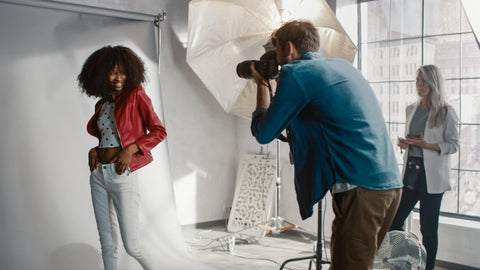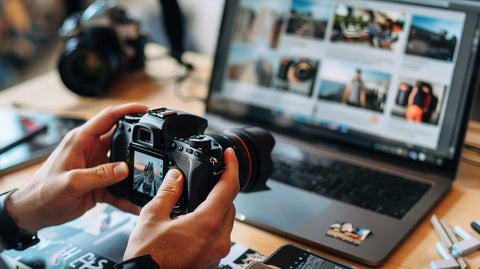- Lightroom Presets
- Mobile Presets
-
Photoshop
-
Learn
-
Support
-
Install
- Best Sellers
- Blog
By Pretty Presets on | No Comments

I grew up in the generation and tradition of the Olan Mills experience. My mom would receive a phone call and then shell out X amount for a portrait package with the local Olan Mills. It was a flat rate, get your portraits made every four months, and one 8x10 per session plan. Simple. Inexpensive. Of course, once at the ordering appointment and presented with beautiful selections, my mom (like so many others) went for the up-sell and walked out lighter in the pocket but with an assortment of beautiful photos to share with family and display at home.
Once I was married and had a family, I also had many Olan Mills portrait plans to showcase and document my babies growing up. It was a fairly cost effective means of preserving the memories and stages of my littles as they grew up. And because we were an Air Force family, it was a great way to keep grandparents and great grandparents happy by sending them photographs of the kids at Christmas.
Fast forward to the digital age and business models began to change. Somewhere along the way, people started thinking it was "better" to receive digital files as a final product after a portrait session rather than having finished photographic prints (or canvases) delivered and ready to display in the home or give as gifts. I'm not sure how that line of thinking started but I do know the first time I did a family photo session as a favor for someone and handed them a USB, I felt as if I was handing over half-finished work. It was unsatisfying for me. It's been two years since that session and I still wonder if the mom ever had her family portraits printed or if her USB is stashed in a drawer someplace in her home.
Several months after that fateful session (and I say fateful because it made me realize two things: one, I enjoyed shooting families, and two, I wanted to do it again) I started kicking around the idea of turning my photography into a business. I wasn't sure if I was good enough or really ready to do it, but with encouragement from a variety of sources I decided it was better to try and fail than to fail to try. My inner nerd took over and I started jotting down ideas on what I wanted my business to look like. I also started researching professional photo labs, product offerings, how to price products and joined an In Person Sales group on FB.
One thing I learned early in my research is that in the photography world, there are strong opinions about an IPS business model. Many assume it's prints only, no digital files. Other assumptions include expensive pricing. In short, In Person Sales means conducting business in person. You buy a car? Most likely, it's done at a dealership in person. You eat dinner at a restaurant? It's done in person. Even though many of us love to shop at home with a laptop and cup of coffee, we still have many encounters where we conduct business in person on a regular basis. The specifics of what you sell and how you price are up to you because you are the business owner. There are many, many variations in business models but the one element that is consistent in IPS is that you are face to face with your client for more than the time allotted during the portrait session. The rest is up to you!

1. I love working with my clients to create a unique experience for them. It might be a location that has meaning or maybe the session has a specific purpose. No matter what the reason is, I like mapping out ideas with my client in order to provide her with an experience she will enjoy.
2. Seeing the reaction to a client's images is gratifying! Yes, that might sound conceited... and I don't mean it that way. But seeing a mom's face light up when she sees her beautiful teenaged daughter on screen and starts to get teary is an awesome feeling! I cried when I saw the proofs at both of our daughter's senior sessions and remember the overwhelming happiness of the moment. Seeing that same joy reflected in my clients eyes when they see their images for the first time makes me truly, truly happy.
3. I'm a control freak. There, I said it. Being able to provide top quality products that will be enjoyed for years to come is something I want to do for my customers. My goal is to ensure their images aren't relegated to a USB in a random drawer, but are turned into beautiful pieces of artwork that will be enjoyed for years to come. And that means having them select images that I then have created into artwork for them.
4. Delivering products feels a little bit like being Santa Claus. I recently had a large canvas order from a friend who is now a client and she was so excited she walked out her front door and headed to my car before I was able to open the cargo bay! Then seeing her face light up like a Christmas tree was so much fun. I stayed to help her hang her canvases and loved the satisfaction she had of "finishing" a newly redecorated space in her home.
These are the primary reasons why I chose an IPS model, but there are other reasons to consider IPS such as these by Elizabeth Halford:
1. The market is saturated and in person sales helps set you apart from the rest of the pack because many photographers don't feel comfortable "selling" products to a client.
2. In person ordering is a premium service that will add luxury to your brand. This means you can charge more for your products (assuming your work is up to par.)
3. Seeing a client's first reaction is the best thing ever! This builds confidence! Try to limit those sneak peeks because the strongest reaction to seeing an image is the first time it's seen. Seeing a sneak peek can undermine your sales efforts.
4. When clients have a huge emotional reaction, sales will follow.
5. It's proven that sales will double when done in person.
6. Quality control - you control what your client sees on your calibrated screen and also in the finished artwork. So often a photographer sends over a link to a gallery or delivers a USB and the client then calls to list a host of complaints such as "our skin is orange" or "it looks fuzzy on my computer" and you know that it looks great. By showing images in person on your screen, it eliminates the doubt that there is something wrong with the images. This also goes for handling your client's artwork needs. You've done the legwork and secured top notch vendors to make sure everything turns out beautiful rather than leaving things to chance at the local drugstore print lab.
Stay tuned for Part II: Understanding Client Behaviors





Comments